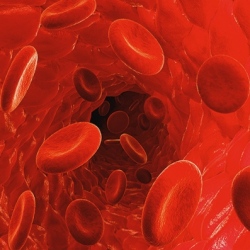
A few years ago Microsoft joined the world of healthcare tech and today they’re putting their time, energy and expertise into solving one of the most complex and deadly challenges humans face: Cancer. Project Hanover is the name that Microsoft has given to a number of initiatives in its quest to help ‘solve’ cancer.
The goal of Project Hanover is simple but ambitious: To use artificial intelligence, machine learning and personalised medicine to help revolutionize the way that science, medicine and biology interact to help bring about a cure for cancer. This would include rare cancers such as mesothelioma.
Project Hanover is a big undertaking with lots of different moving parts. It was split into mini-initiatives that include machine learning, cancer decision support, and chronic disease management. Here is a breakdown of what that all means.
Machine learning, without getting too technical, it is a phrase used to describe the intelligence of a computer and how it is programmed to “learn” and figure out information on its own. With the explosion of biomedical knowledge researchers are discovering on a daily basis, Microsoft wants to develop machine learning technology that will take this immense volume of data and convert it into easier bits of information that scientists can use to help save lives.
For instance, there are hundreds of new cancer drugs being developed and thousands of new research articles published every month. Doctors treat patients by trying to figure out the best combination of drugs for each patient’s specific disease. The problem is that there is simply too much to read and too many drug combinations for them to choose from. That’s where machine-learning comes in. It can help by telling doctors which drug combinations are best to use for which patients.
Another mini-initiative of Project Hanover is called cancer decision support. It sees Microsoft team up with other agencies to use artificial intelligence to focus on developing new approaches to personalize drug treatments for cancer sufferers.
Cancer is not a single disease, it is actually a thousand different diseases that share similar symptoms and each patient’s individual set of genes may determine the best treatment for them. This is called precision medicine – that is, medical treatments are tailored to each individual. Precision medicine is relatively new and still undergoing research in many different areas, but using AI technology may be the key to unlocking it.
Other goals in Project Hanover involve a machine-learning and computer-vision system to help radiologists understand how patients tumors are growing inside their body or a particularly ambitious goal (which Microsoft is calling its “moonshot” effort) that aims to create biological cells that will fight diseases like cancer.
But Project Hanover isn’t just about cancer research. It’s also looking at new ways to improve the lives of those with chronic diseases and trying to combat the soaring cost of healthcare spending in the U.S.
The focus of Project Hanover is based upon the principles of personalized medicine. At its core, the project is bringing together new and existing technologies, analytical techniques, and computing knowledge to give cancer sufferers and those with chronic diseases a better chance at survival.
As an example of what Microsoft hopes to do consider that when a single patient’s genomic data is studied to help make treatment decisions, it takes a group of highly trained specialists to get together in one room and spend hours trying to decipher exactly what they’re looking at and what decisions to make. With 1.6 million new cancer cases and 600,000 deaths in the U.S. alone each year, painstakingly taking each patient’s medical data to do this is simply not feasible. This is where artificial intelligence will play a role. Microsoft envisions that AI can be used to help tackle this monumental task amongst many others.
Microsoft and Project Hanover’s overarching philosophy toward solving cancer focuses on two basic approaches. One is to think about cancer and other biological processes as information processing systems. The other is based on the idea that researchers can apply computing techniques to the mountain of biological data that has suddenly become available.
Both approaches share common ground – it asks biologists and computer scientists to use their expertise to solve the problem of cancer. Until a few years ago cancer had always been considered a medical problem that could only have a medical solution but today that has changed. Cancer is still a medical problem but it may well also have a technological solution.
If you would like to know more about Mesothelioma click here.
